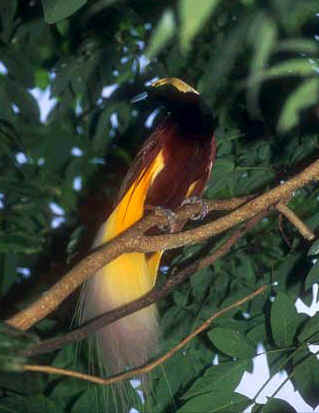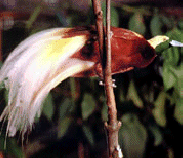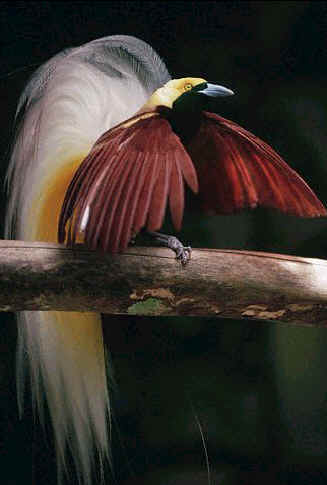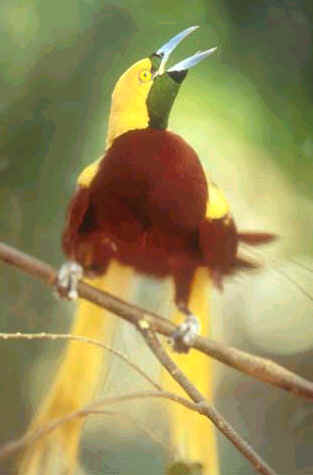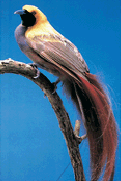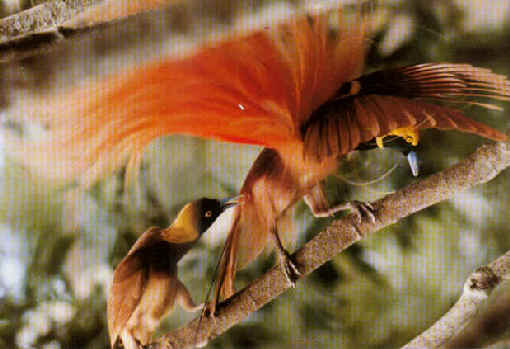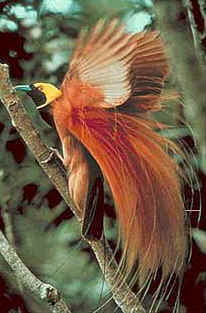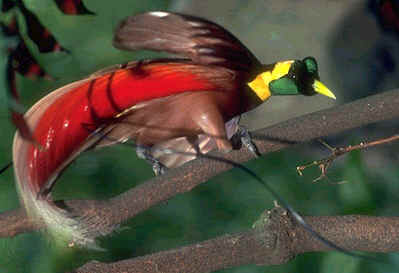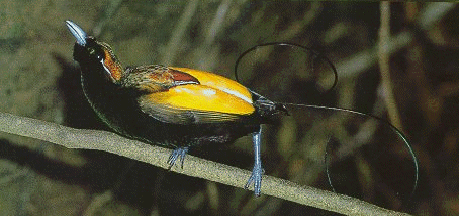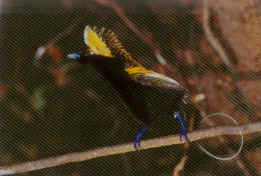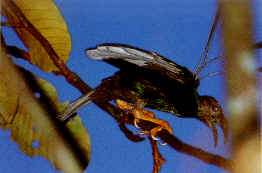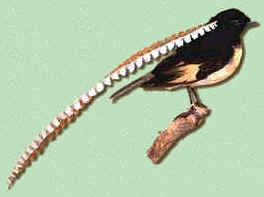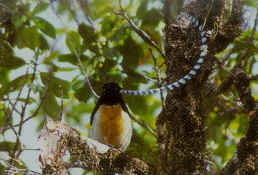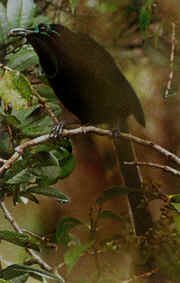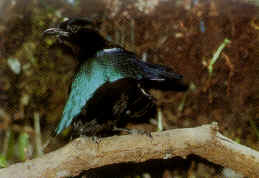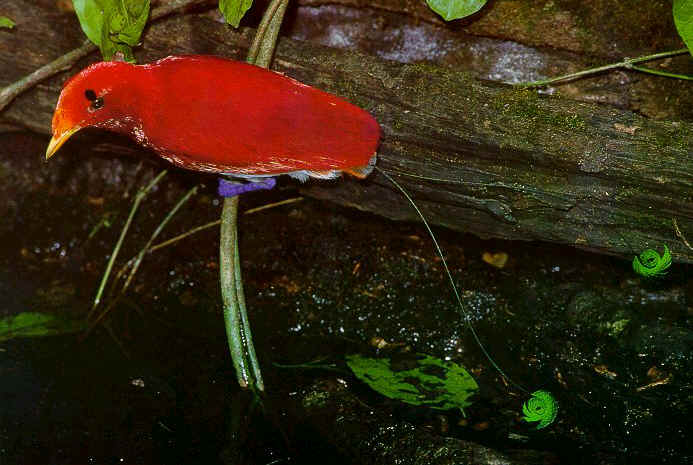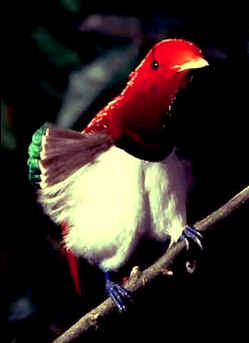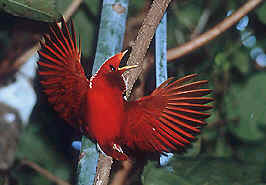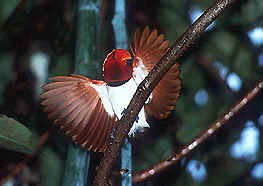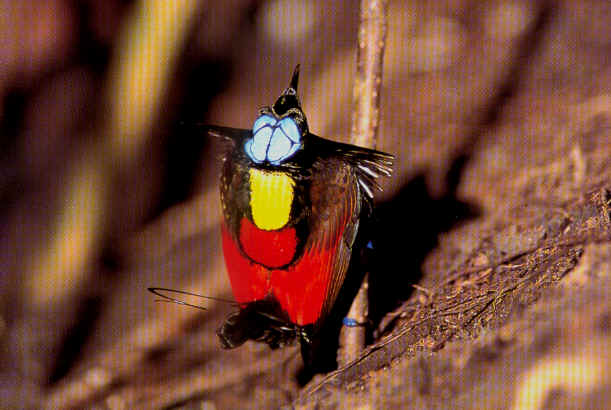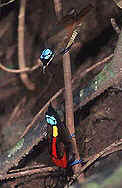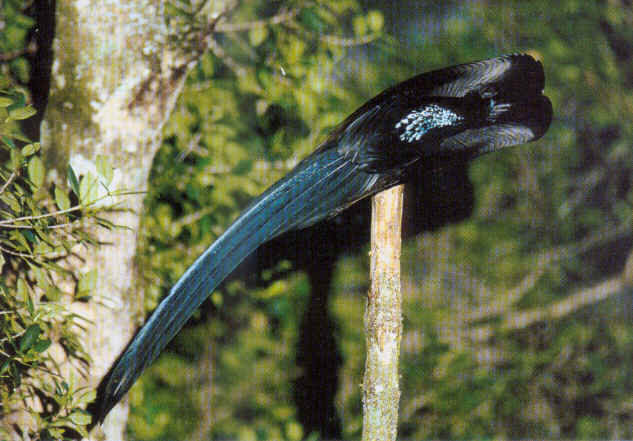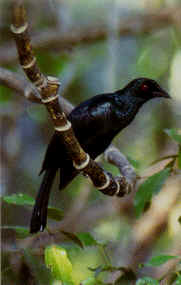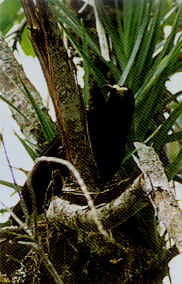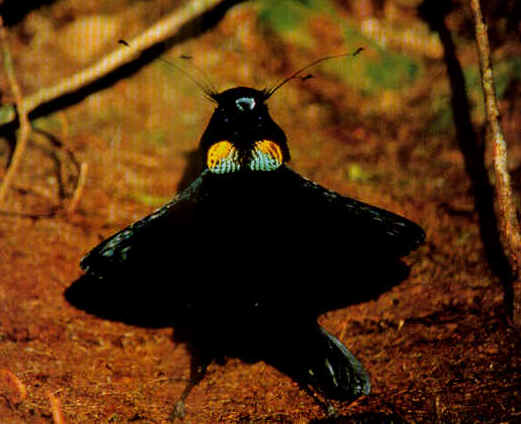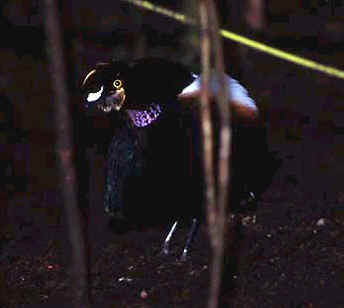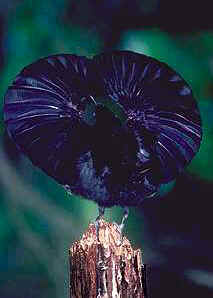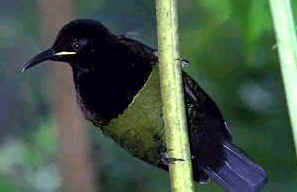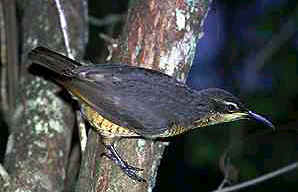The King Bird of
Paradise has shining scarlet feathers, a white belly, and a band
of brilliant emerald green across its breast. On each side of the breast
grow tufts of feathers tipped with a green hue which gleams like metal
(see left photograph).
These tufts can be spread out like fans. The two middle feathers of the
tail are like long bare wires which end in spiral emerald-colored disks
(see top photograph).
In
one of the male's displays, he expands his breast fan and puffs up the
feathers of his underparts so that he appears almost spherical. He then
raises his long, wirelike tail shafts so that the green racquets at their
tips are above his head, and raises and sways his head from side to side.
In another display, he hangs upside-down from a perch with wings spread
and vibrating and his bill open to display the bright yellow-green
interior of his mouth (see right photographs).
